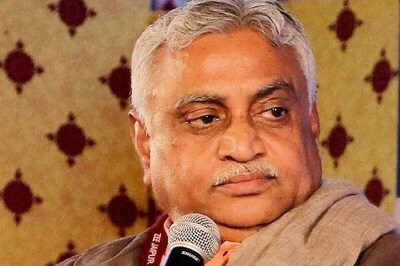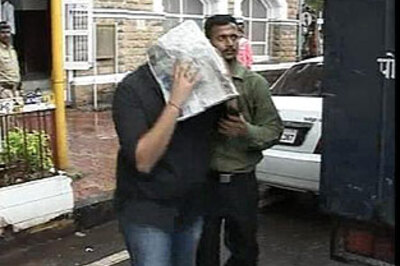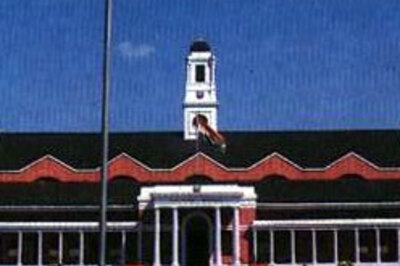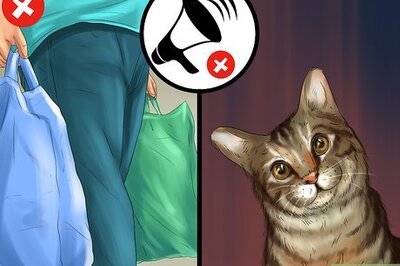
views
Ratan Tata’s name is synonymous for innovation, philanthropy and kindness. Considered as an icon by middle-class Indians, Tata’s Nano car dream can be called his most cherished project, which was actually inspired by “Indian families on scooters”.
Tata, who rolled out the Nano car in 2009, had explained in an Instagram post in 2022 what “really motivated” him in producing a cheap and compact car. “What really motivated me, and sparked a desire to produce such a vehicle, was constantly seeing Indian families on scooters, maybe the child sandwiched between the mother and father, riding to wherever they were going, often on slippery roads,” he had written in the post.
How the Idea Got Involved Into A Buggy
Tata had said, at first, he was trying to make two-wheeler safer. He said one of the benefits of attending the School of Architecture had taught him to “doodle when I was free”. “At first, we were trying to figure out how to make two wheelers safer, the doodles became four wheels, no windows, no doors, just a basic dune buggy. “But I finally decided it should be a car. The Nano, was always meant for all our people,” he had written.
In a 2020 interview with Humans of Bombay, he said witnessing a family on four on a two-wheeler during heavy rains made him want to do more for people who lacked the means to buy safer alternatives.
“I remember seeing a family of 4 on a motorbike in the heavy Bombay rain — I knew I wanted to do more for these families who were risking their lives for lack of an alternative,” he said.
“Looking back, I’m still proud of the car and the decision to go ahead with it.”
Former Tata Sons Chairman Cyrus Mistry labelled the Nano a financially unsustainable venture. In an email following his dismissal as chairman, Mistry claimed the Nano was a loss-making project, stating, “The Nano product development required concept called for a car below Rs 1 lakh but the costs were always above this. This product has consistently lost money, peaking at Rs 1,000 crore.”
How Nano Saw a Slow Death
The Rs 1 lakh car was launched with much fanfare in March 2009. The project faced controversy over its location in Singur in West Bengal due to protests led by Mamata Banerjee in October 2008. The plant was finally shifted to Sanand in Gujarat.
The car encountered several challenges, including mechanical issues that led to sporadic fires, safety concerns and the perception of being labelled as “poor man’s car”.
This perception led many middle-class Indian sway away from buying the car, which was built with a 625 cc engine and was rather smaller in size compared to many other entry cars like Maruti 800.
When Rata Tata Accepted the Cost Factor in Nano
Rata Tata acknowledged in January 2008 the rising input costs such as steel, tires and other components that could affect the Nano’s price but remained committed to delivering the cheapest car under Rs 1 lakh.
“Since we commenced this exercise four years ago, we are all aware that there has been a very steep increase in input prices… I would like to announce today that the standard car will in fact have a dealer price of 1 Lakh only… a promise is a promise and that’s what we would like to leave you with,” Tata had said.
Despite Tata’s commitment, the Nano’s performance faced many roadblocks as the car’s facility, designed for an annual capacity of 250,000 vehicles, produced only 42,561 units between January 2014 and December 2015. From 74,521 cars sold in 2011-12, only 16,903 sales were clocked in 2014-15.
He said Tata Motors had made a marketing mistake in terms of positioning Nano as the cheapest car. “It became termed as the cheapest car by the public and, I am sorry to say, by ourselves, not by me, but the company when it was marketing. I think it was unfortunate.” He said the car should have been marketed more to two-wheeler buyers as an “affordable” and safe, all-weather option, but not as “the cheapest” vehicle on the road.
In 2014, Tata attempted to reposition Nano with the introduction of ‘Nano Twist’, but this project also tanked. Despite subsequent releases like the GenX model featuring automatic transmission, the Nano never achieved the desired sales success.
Ratan Tata’s Tiff With Mamata Over Singur?
In that open letter, Tata said he felt compelled to write to explain how his company’s dream was shattered. He asked the people of West Bengal to ‘choose’ between the Buddhadeb Bhattacharjee government or a “destructive political environment of lawlessness.”
“Would they (the people of Bengal, particularly the youth) like to support the present government of Buddhadeb Bhattacharjee to build a prosperous state with the rule of law, modern infrastructure and industrial growth, or would they like to see the state consumed by a destructive political environment of confrontation, agitation, violence and lawlessness,” asked Tata, as quoted by Outlook.
The Trinamool Congress under Mamata Banerjee called Tata’s remarks “politically motivated” and accused him of “holding brief for the CPI(M) and the chief minister”. Some TMC leaders also remarked that Tata stooped to low to side with a political party and a government.
After relocating the Nano factory to Gujarat, Tata continued to target Mamata Banerjee. In fact, at the launch of the car in Delhi’s auto expo, Tata jokingly said some people had suggested that he name the car “despite Mamata”.
The Tata’s outburst against Mamata Banerjee did not cost the TMC electorally. In the 2009 Lok Sabha elections, TMC’s performance in Singur improved while the Left won only 15 seats compared to 35 in 2004.
Even in 2014 when Banerjee topped the Left government, and tensions eased between Tata and her, the late industrialist said he saw “unbelievable change in terms of buildings and development” but the area still looked like a “countryside under development”, when asked about noticing any changes in West Bengal.
In 2016, the Supreme Court held the land acquisition illegal, due to the government’s procedural gaps and ordered the return of the land to landowners. Subsequently, the entire construction was razed to the ground and the land plots were handed over to their original owners.
The Tatas and the state government are still engaged in a legal battle over compensation. The Tatas demand damage for their entire investment while the government blames the Tatas for the withdrawal of the plant from Singur.




















Comments
0 comment